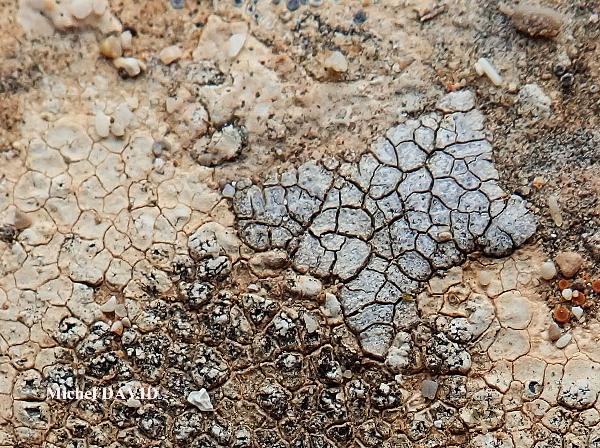Placopyrenium canellum (Nyl.) Gueidan & Cl. Roux
in Navarro-Rosinés & al., Bull. Soc. Linn. Prov., 58: 174, 2007. Basionym: Verrucaria canella Nyl. - Flora, 66: 102, 1883.
Synonyms: Verrucaria aspiciliae Zehetl. non (J. Lahm) Stizenb. nec Vain.; Verrucaria aspiciliicola R. Sant.; Verrucaria glaucina subsp. canella (Nyl.) A.L. Sm.
Distribution: N - VG (TSB 10627), Frl, Ven, Piem, Emil (Fariselli & al. 2020), Lig (Breuss 2009, Giordani & al. 2025). C - Tosc (vidi!), Marc (Nimis & Tretiach 1999), Umb (Nimis & Tretiach 1999, Ravera & al. 2006, Panfili 2007), Laz (Nimis & Tretiach 2004), Abr (Nimis & Tretiach 1999, Gheza & al. 2021), Mol (Caporale & al. 2008), Sar (Rizzi & al. 2011, Brackel & Berger 2019). S - Camp (Aprile & al. 2003b, Nimis & Tretiach 2004, V), Pugl (Nimis & Tretiach 1999), Bas (Nimis & Tretiach 1999), Cal (Puntillo 2011), Si (Nimis & al. 1994, 1996b, Ottonello & Salone 1994, Ottonello 1996, Gianguzzi & al. 2009).
Description: Thallus crustose, episubstratic, well developed, areolate, 0.25–0.6 mm thick, the areoles angular, flat, constricted at base and separated by deep cracks, 0.2-1 mm wide, pale grey, usually pruinose, the margins and the sides dark brown to black. Cortex poorly defined, paraplectenchymatous, the cell walls with a brown pigment, overlain by an up to 10 μm thick epinecral layer; medulla colourless to patchily dark pigmented. Perithecia black, 1-5 per areole, immersed, the apex flattened to slightly convex, 0.1-0.2 mm across. Involucrellum absent or poorly developed around the ostiole (appearing as a thickening of the exciple); exciple colourless to brown in lower part, dark brown in upper part, the pigmented parts K+ slightly darker or greenish brown; hamathecium of periphyses and periphysoids, interascal filaments absent; hymenial gel hemiamyloid, I+ red (I+ blue at very low concentrations of I), K/I+ blue. Asci 8-spored, clavate, I-, fissitunicate, the wall thickened above with an indistinct ocular chamber, Verrucaria-type. Ascospores 1-celled, hyaline, narrowly oblong or ellipsoid, (18.5-)21-27(-30.5) x (6.5-)7.5-9(-10.5) μm, surrounded by a up to 1.2 μm thick gelatinous perispore. Photobiont chlorococcoid. Spot tests: cortex and medulla K-, C-, KC-, P-, UV-. Chemistry: without lichen substances. Note: a very common, formerly misunderstood saxicolous species which starts the life-cycle on species of the Circinaria calcarea-complex; certainly widespread throughout Italy. Some records could refer to Verrucaria polysticta.
Growth form: Crustose
Substrata: rocks
Photobiont: green algae other than Trentepohlia
Reproductive strategy: mainly sexual
paras Circinaria calcarea s.lat.
Commonnes-rarity: (info)
Alpine belt: absent
Subalpine belt: rather rare
Oromediterranean belt: rare
Montane belt: rather common
Submediterranean belt: very common
Padanian area: extremely rare
Humid submediterranean belt: very common
Humid mediterranean belt: common
Dry mediterranean belt: rather rare

Predictive model
Herbarium samples
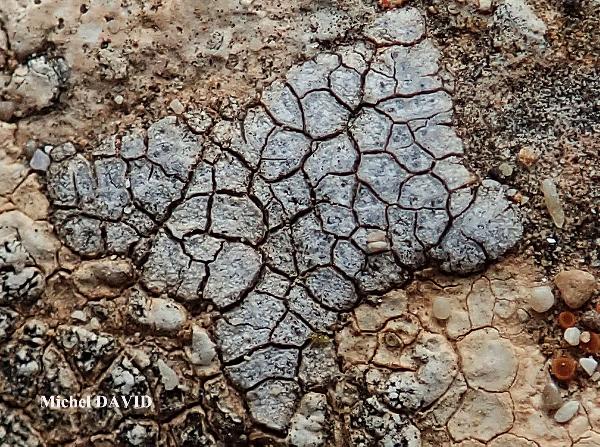
Michel David - Source: http://www.lichensmaritimes.org/index.php?task=fiche&lichen=1344&lang=en
Spain, Baleares, Ibiza, Cala Gracioneta San Antonio
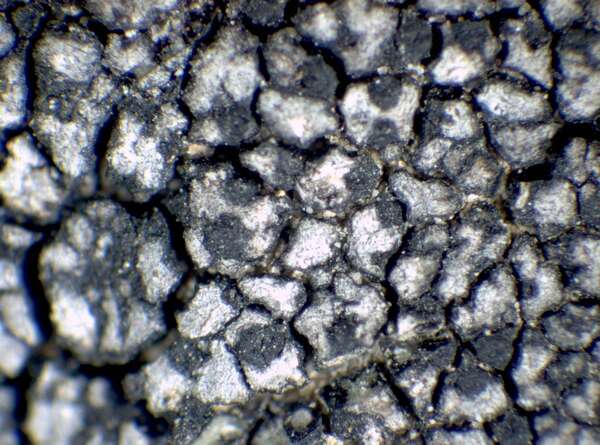

P.L. Nimis; Owner: Department of Life Sciences, University of Trieste
Herbarium: TSB (11395)
2001/12/03
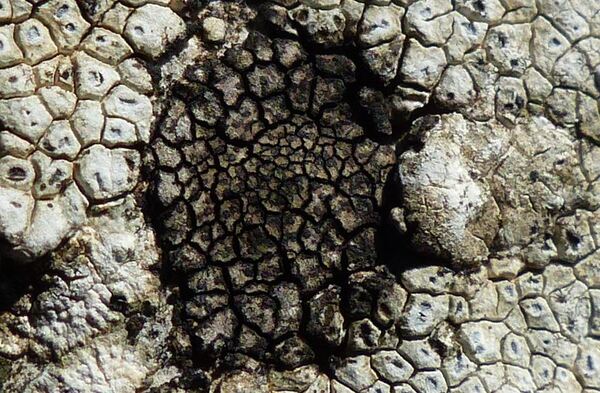

Andrea Moro; Owner: Department of Life Sciences, University of Trieste
italy, Friuli Venezia Giulia, Trieste, Trieste Karst near Borgo Grotta Gigante
16/02/2017
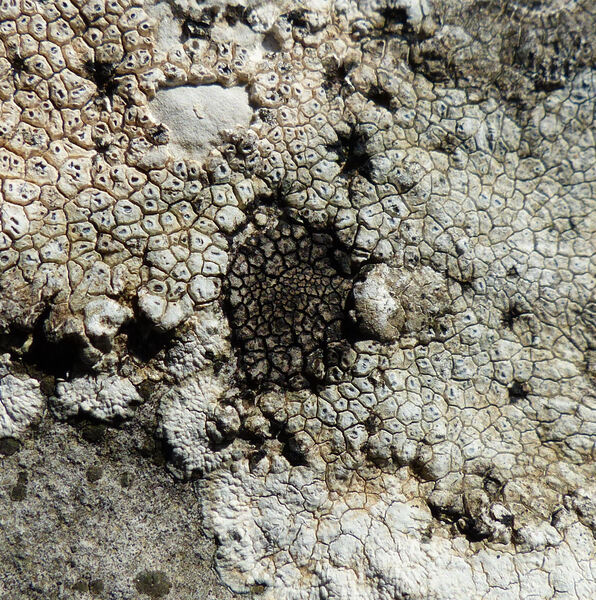

Andrea Moro; Owner: Department of Life Sciences, University of Trieste
italy, Friuli Venezia Giulia, Trieste, Trieste Karst near Borgo Grotta Gigante
16/02/2017
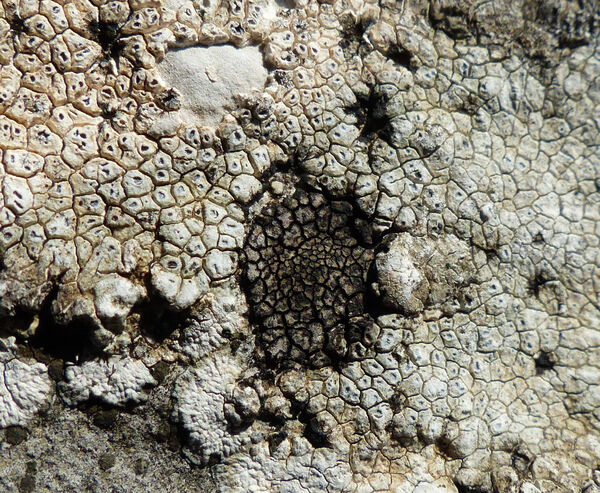

Andrea Moro; Owner: Department of Life Sciences, University of Trieste
italy, Friuli Venezia Giulia, Trieste, Trieste Karst near Borgo Grotta Gigante
16/02/2017
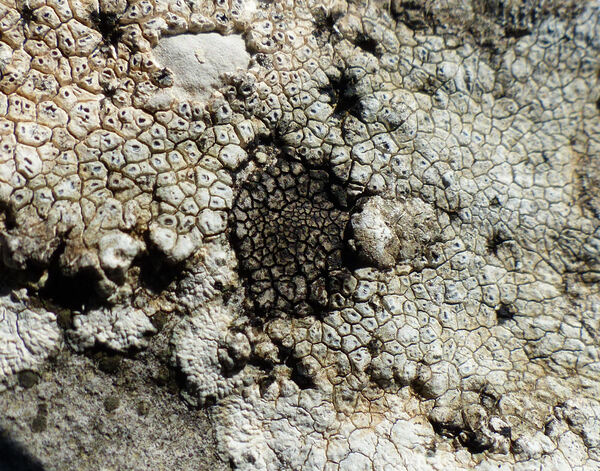

Andrea Moro; Owner: Department of Life Sciences, University of Trieste
italy, Friuli Venezia Giulia, Trieste, Trieste Karst near Borgo Grotta Gigante
16/02/2017
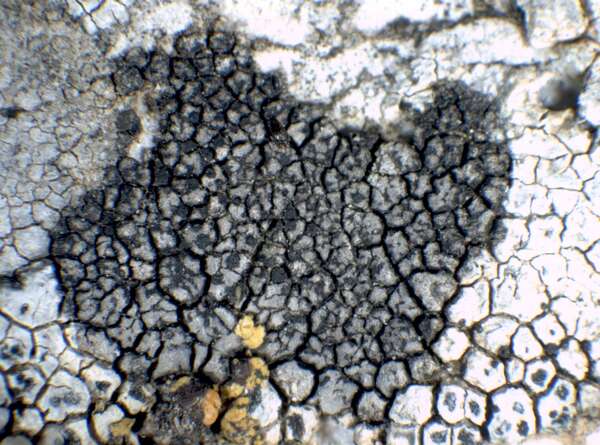

P.L. Nimis; Owner: Department of Life Sciences, University of Trieste
Herbarium: TSB (11395)
2001/12/03
on the host, Aspicilia calcarea
Growth form: Crustose
Substrata: rocks
Photobiont: green algae other than Trentepohlia
Reproductive strategy: mainly sexual
paras Circinaria calcarea s.lat.
Commonnes-rarity: (info)
Alpine belt: absent
Subalpine belt: rather rare
Oromediterranean belt: rare
Montane belt: rather common
Submediterranean belt: very common
Padanian area: extremely rare
Humid submediterranean belt: very common
Humid mediterranean belt: common
Dry mediterranean belt: rather rare

Predictive model
| Herbarium samples |

Michel David - Source: http://www.lichensmaritimes.org/index.php?task=fiche&lichen=1344&lang=en
Spain, Baleares, Ibiza, Cala Gracioneta San Antonio


P.L. Nimis; Owner: Department of Life Sciences, University of Trieste
Herbarium: TSB (11395)
2001/12/03


Andrea Moro; Owner: Department of Life Sciences, University of Trieste
italy, Friuli Venezia Giulia, Trieste, Trieste Karst near Borgo Grotta Gigante
16/02/2017


Andrea Moro; Owner: Department of Life Sciences, University of Trieste
italy, Friuli Venezia Giulia, Trieste, Trieste Karst near Borgo Grotta Gigante
16/02/2017


Andrea Moro; Owner: Department of Life Sciences, University of Trieste
italy, Friuli Venezia Giulia, Trieste, Trieste Karst near Borgo Grotta Gigante
16/02/2017


Andrea Moro; Owner: Department of Life Sciences, University of Trieste
italy, Friuli Venezia Giulia, Trieste, Trieste Karst near Borgo Grotta Gigante
16/02/2017


 INDEX FUNGORUM
INDEX FUNGORUM
 GBIF
GBIF
 DOLICHENS
DOLICHENS
